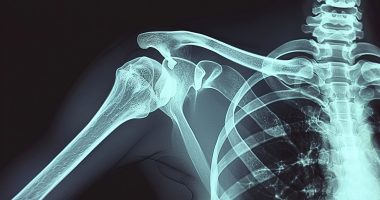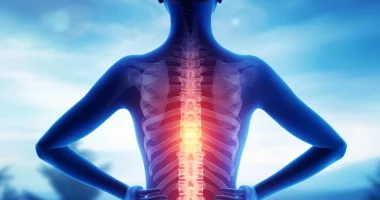Cystocele
Definition
A cystocele is a prolapse of the bladder into the vagina due to a failure of the pelvic diaphragm. It is manifested by a foreign body sensation in the vagina, urinary retention, urinary incontinence, dyspareunia, lower abdominal and lower back pain. It is diagnosed by vaginal examination, ultrasound of the urethra and bladder, complex urodynamic, and video-urodynamic studies. Conservative treatment of cystocele includes pelvic muscle training, hormone replacement therapy, and installation of a vaginal pessary. During surgical correction, anterior colporrhaphy, vaginopexy with or without synthetic prosthesis, and sling operations are performed.
General information
Cystocele (protrusion, prolapse of the bladder) is the most common type of genital prolapse, occurring in 34% of women with pelvic dyscrasia syndrome. It is almost always combined with ureterocele. The incidence increases with age, reaching 55-60% in postmenopause.
Despite the successes of preventive medicine, constant reduction of birth traumatism, and reduction of women’s employment in heavy industries, the incidence of cystocele in the population remains high and continues to increase, which is associated with an increase in life expectancy. The relevance of timely diagnosis and adequate treatment of bladder prolapse is due to the significant deterioration in the quality of life and, in severe cases, disability of patients.
Causes of cystocele
Bladder prolapse is one of the manifestations of pelvic floor failure syndrome and develops under the influence of the same factors as prolapse of other organs (rectum, uterus, vagina). The direct cause of cystocele is the weakening and formation of hernia-like defects of the muscular-ligamentous-fascial apparatus supporting the bladder, primarily the long-neck bladder fascia. Specialists in the field of modern urology and urogynecology identify several predisposing factors that increase the risk of pelvic prolapse:
- Frequent childbirth. The likelihood of a cystocele increases after each subsequent natural delivery.
- Dyshormonal conditions. Estrogen deficiency contributes to the weakening of musculofascial structures, which is associated with an increased incidence of cystocele during perimenopause and after oophorectomy.
- Hereditary connective tissue dysplasia. The frequency of the familial form of cystocele reaches 30%. Both genetic anomalies (Marfan syndrome, Ehlers-Danlos disease) and undifferentiated forms of collagenopathies manifested by hernias of other localizations, juvenile spinal osteochondrosis, varicose veins, hemorrhoids, myopia, flat feet, and other disorders contribute to the weakening of the pelvic diaphragm.
- Increased intra-abdominal pressure. Herniation of the bladder into the vaginal cavity is promoted by heavy physical exertion and diseases that increase the pressure in the abdominal cavity.
Classification
Systematization of clinical forms of cystocele is based on the degree of organ prolapse:
- Grade I protrusion. With mild prolapse, the bladder descends to the middle part of the vagina and is detected during gynecological examination with pushing. In most cases, it is sufficient to use conservative non-drug and drug methods to correct the violation.
- Grade II protrusion. In patients with moderate bladder prolapse, the herniation is found in the lower half of the vagina and may reach its entrance. It is detected on gynecologic examination without pushing. Surgical treatment is more effective, although a conservative approach is also acceptable.
- Grade III protrusion. The bladder extends beyond the genital slit. Prolapse persists at physical rest. In the background of cystocele, complications from the genitourinary organs often develop. Conservative elimination of the pelvic floor defect is impossible; reconstructive plastic surgery is recommended.
Symptoms of a cystocele
When the prolapse is small, there are no clinical symptoms. As the herniation increases, urovesical protrusion begins to manifest itself with sensations of pressure, the presence of a foreign body in the vagina, which increase during urination, defecation, coughing, and lifting weights. As the disease progresses, the urine stream weakens to acute retention; due to an increase in the volume of residual urine, there is a feeling of an overfilled bladder and imperative urges to urinate.
The sensation of a large foreign object in the genital tract persists permanently. Sexual function is impaired in 30% of patients due to pain during sexual intercourse. With severe cystocele, urinary incontinence in stressful situations is observed. There is heaviness, a feeling of squeezing, and dull, aching pain in the lower abdomen and lower back, which may irradiate to the groin area.
Complications
An increased amount of residual urine contributes to the development or exacerbation of cystitis, the formation of stones in the bladder cavity. Prolonged obstructive disruption of natural urinary excretion increases the risk of infectious pyelonephritis, hydroureteronephrosis, and urolithiasis, which may subsequently be aggravated by chronic renal failure. Due to a significant deterioration in the quality of life, women with cystocele are more likely to suffer from depressive and neurotic disorders.
Diagnosis
When making a diagnosis of cystocele, physical examination, and instrumental studies are used to verify the prolapse of the bladder into the vagina. To choose the optimal treatment method, assessing the integrity of the pubic-cervical fascia is recommended. The most informative in diagnostic terms are:
- Vaginal examination. A prolapsed bladder is usually detected on the anterior wall as a soft, repositionable tumor-like mass that increases in volume and thickens with pushing.
- Ultrasound examination. According to an ultrasound of the bladder, the cystocele signs a re-displacement of the posterior urethral wall below the pubic level at rest, and when pushing (coughing), its deformation is in the form of an acute triangle. Hypermobility and dislocation of the urethra, determined by ultrasound of the urethra, indicate a central defect of the cervical-pubic fascia.
- Complex urodynamic study. Conducting uroflowmetry, filling cystometry, and tension cystometry allows us to reveal the impaired closure function of the urethrovesical sphincter and decreased detrusor contractility.
- Endoscopic diagnosis. Cystoscopy is usually difficult to perform. Endoscopic examination usually allows visualization only of the bladder vestibule and downward longitudinal folding on its posterior wall.
- Radiological diagnosis. Cystography is used mainly as an auxiliary method in the diagnosis of cystocele.
Cystocele treatment
Conservative treatment
At the initial stages of prolapse formation, the primary therapeutic goal is the correction of urovesical protrusion. In severe prolapse, to normalize the function of the bladder, adjacent organs require restoring the anatomical integrity of the pelvic diaphragm. Patients with mild and moderate degrees of cystocele are recommended to correct lifestyle with the exclusion of heavy physical exertion, treatment of concomitant pathology contributing to the formation of genital hernia, etiopathogenetic and symptomatic conservative therapy of urethrovesical prolapse:
- Strengthening of pelvic floor muscles. Kegel exercises are effective in reducing muscle tone after childbirth, against the background of involutional or postoperative hypoestrogenism.
- Hormone replacement therapy. Women with symptoms of cystocele arising against the background of menopause or post-castration syndrome are recommended to prescribe estrogen-containing or phytoestrogenic drugs. Hormonal therapy increases the tone of pelvic musculature and strengthens the ligaments, reducing prolapse and related disorders.
- Insertion of a pessary. The introduction of a special support device into the vagina prevents further wall prolapse and provides mechanical fixation of the prolapsed bladder. The method is considered palliative and is recommended for women who refuse surgical treatment or cannot be operated on for health reasons.
- Physiotherapy. Physiotherapeutic techniques (laser therapy, electromyostimulation) are also used in the complex conservative treatment of cystoceles.
Surgical treatment
If therapeutic approaches are ineffective, patients with severe or complicated cystoceles undergo reconstructive surgery. The choice of the type of surgical intervention depends on the condition of the pubocervical fascia.
If the fascial tissue does not have an anatomical defect, the best results are observed after vaginopexy or anterior colporrhaphy. If the integrity of the fascia connecting the bladder to the bosom joint is compromised, synthetic mesh prostheses are installed. To eliminate urinary incontinence, plastic surgery is supplemented with minimally invasive sling (loop) interventions.
All these treatment options are available in more than 130 hospitals worldwide (https://doctor.global/results/diseases/cystocele). For example, Surgery for pelvic organ prolapse can be done in 12 clinics across Germany for an approximate price of $12.9 K (https://doctor.global/results/europe/germany/all-cities/all-specializations/procedures/surgery-for-pelvic-organ-prolapse).
Prognosis and prevention
The use of conservative methods of therapy in the absence of gross anatomical defects of the pelvic floor can significantly improve the quality of life of the patient and postpone surgery. The effectiveness of surgical treatment in anterior colporrhaphy ranges from 45 to 91%, and positive results in vaginopexy are observed in 95-97% of operated women.
To prevent cystocele in the postpartum and perimenopausal period, it is recommended to strengthen the pelvic floor muscles with Kegel exercises, physiotherapeutic procedures, diet to prevent constipation, and limit the weight lifting to no more than 3 kg. The presence of extragenital pathology, which can provoke urovesical prolapse, requires timely, adequate therapy of the underlying disease. An essential role in the prevention of cystoceles is played by reducing obstetric traumatism through careful management of labor, anatomical restoration of the integrity of the birth canal after ruptures, and thread lifting of the vagina in case of weakening of the pelvic diaphragm.


